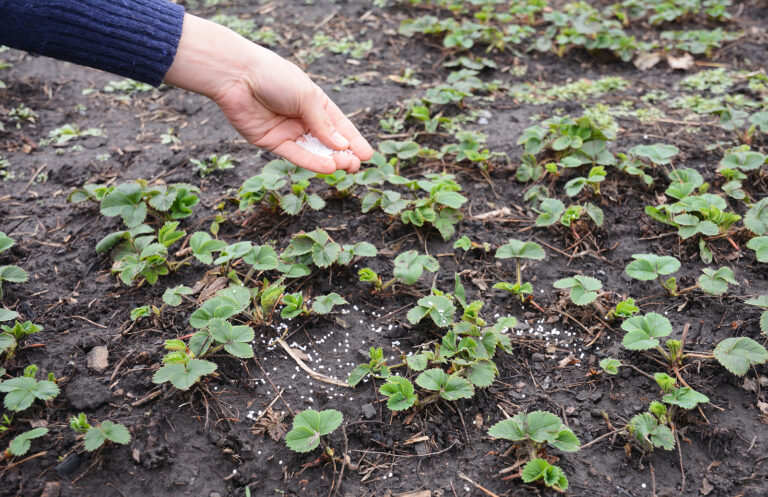Prepping a Seedbed for Direct Sowing
A well-prepared seedbed is essential for strong germination, fast seedling establishment, and an even stand of crops. Whether you grow in in-ground rows or raised beds, direct-sown seeds need fine, moist, well-aerated soil that allows good seed-to-soil contact. Preparing a seedbed in a no-till or low-till garden means focusing on surface preparation rather than deep digging. With the right steps, you can create perfect germination conditions without disturbing soil biology.
What Direct-Sown Seeds Need to Germinate Successfully
1. Good Seed-to-Soil Contact
Seeds must touch moist soil to activate germination enzymes.
How to achieve it:
- Lightly rake or smooth the top ½–1 inch of soil.
- Break up clods bigger than a pea.
- Water before sowing if soil is dry.
2. A Fine, Even Soil Texture
Direct-sown seeds—especially small ones—need a fine-textured surface layer.
How to create it:
- Use a hand rake, cultivator, or your fingers to crumble the surface only.
- Add a ½-inch layer of screened compost to create a fine sowing medium.
- Avoid digging deeper than necessary to maintain soil structure.
3. Moisture That Stays Consistent
Seeds must stay evenly moist (not soaked) until germination.
How to achieve it:
- Pre-water the bed the day before planting.
- Use a watering wand or fine rose to avoid displacing seeds.
- Mulch lightly with sifted compost or a thin sheet of row cover to reduce evaporation.
4. Warmth Appropriate to the Crop
Different plants germinate at different temperatures.
Cool-season crops (40–55°F soil): lettuce, peas, spinach, radishes
Warm-season crops (65–85°F soil): beans, corn, squash, cucumbers
Tip:
Use a soil thermometer rather than guessing from air temperature.
5. Low Weed Pressure
Weeds compete heavily with small seedlings.
How to reduce weeds before sowing:
- Flame weed the bed a few days before planting.
- Water, let weeds sprout, then slice or flame them (“stale seedbed” method).
- Add a very thin layer of finished compost to bury weed seeds at the surface.
How to Prep a Seedbed in Raised Beds
Raised beds warm early, drain well, and create ideal conditions for direct sowing.
Steps
- Remove large debris (sticks, rocks, old roots).
- Smooth the top 1–2 inches with a rake or hand tool.
- Add ½–1 inch of screened compost over the surface.
- Pre-moisten soil.
- Sow seeds, press gently with your palm, and cover lightly.
- Water with a soft spray and protect with shade cloth or row cover if needed.
Raised bed benefits:
- Faster warming soil
- Better drainage
- Less compaction
- Smoother seedbed with minimal effort
How to Prep a Seedbed in In-Ground Beds
In-ground beds can grow excellent direct-sown crops with a little extra attention.
Steps
- Clear plant debris or cut spent plants at soil level.
- Use a rake to break the top crust without digging.
- Add compost to improve texture and moisture retention.
- Level the bed so water spreads evenly.
- Sow seeds and cover lightly with soil or compost.
- Water gently and consistently.
Optional:
Use the stale seedbed method a week before planting to reduce weed pressure.
Tips for Perfect Germination
Cover seeds correctly
- Large seeds: 1–2x their diameter with soil or compost.
- Small seeds: barely covered or simply pressed into the surface.
Firm, don’t compact
After sowing, press gently with a board or your hand to ensure contact.
Protect from crusting
If soil crusts after watering, sift ⅛–¼ inch of compost over the top.
Shade and moisture retention
Use row cover to keep the surface moist until germination.
Common Mistakes to Avoid
- Planting too deep
- Letting the soil dry out
- Sowing into cloddy or crusty soil
- Watering too hard and displacing seeds
- Planting into cold soil too early
Conclusion
A well-prepared seedbed sets the stage for fast, even germination and strong early growth. With top-down surface preparation—rather than deep tilling—you can create ideal sowing conditions in any garden system. Raised beds and in-ground beds both produce excellent results when moisture, texture, weeds, and seed-to-soil contact are managed carefully.



